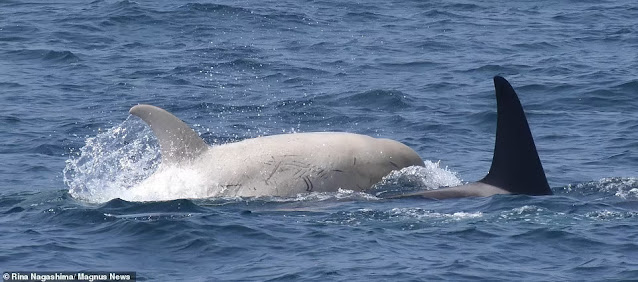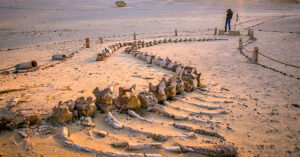Whale watchers were shocked when they saw two very rare white orcas moving together in a group off the coast of Japan.
On a tour to look for whales between the Japanese islands of Hokkaido and Kunashir, the orcas were seen.

Mai, who works for the Gojiraiwa-Kanko tour company, said that one of the orcas was older and had darker skin, while the other was younger and had clear scratch marks going down its back.
She said that the adult whale had been seen for the first time about two years ago, while the younger whale had just been seen for the first time lately.

I said, “It was the best day ever.” She says that two white orcas have never been seen off the coast of Japan before.

Instead of albinism, leucism has been found in orcas. This is because they didn’t have no colour on them at all.
That’s why the orcas seen near Japan still had the white patches around their eyes and chins, and why their eyes were still black.
Since the scar tissue seems to have darkened as it repaired, it may help us figure out what kind of scars run down the side of the younger animal.

Scientists have found at least five white orcas and whales that are still alive. Because they were so rare, people used to think that they were made up stories.
As a species’ population goes down, the surviving animals have fewer potential mates to choose from. This means that the species’ genetic diversity goes down, which is seen as a sign that the species is in danger.
This includes genetic diseases that make it hard for an animal to live in the wild and could cause the species to go extinct faster.

No one knows exactly what leucism does to inherited orcas, but it can make them stand out, make it harder for them to hunt, and draw unwanted attention from other orcas.



